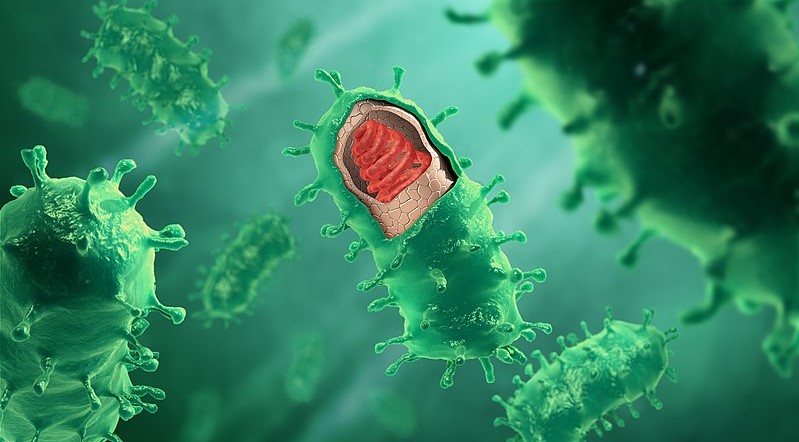Glycosylation Analysis Service for Rabies Virus Glycoprotein
Rabies Virus Glycoprotein
Rabies virus (RABV), a member of the Lyssavirus genus in the Rhabdoviridae family, possesses a negative-sense RNA genome encoding five structural proteins: nucleoprotein (N), phosphoprotein (P), matrix protein (M), glycoprotein (G), and viral RNA polymerase (L). The G protein is the only transmembrane protein on the surface of the rabies virus and plays a crucial role in viral attachment and infection through interactions with specific cell surface receptors. Moreover, the G protein is the primary antigen responsible for initiating the production of virus-neutralizing antibodies, making it a central target in vaccine development against rabies. The G protein features three potential N-linked glycosylation sites at Asn37, Asn247, and Asn319 in its extracellular domain. These glycosylation sites are vital for ensuring the correct expression and functionality of the G protein. Changes in the number of N-glycosylation sites and the efficiency of glycosylation at specific sites of the G protein can affect virus properties, such as infectivity, pathogenicity, and immunogenicity. A thorough understanding of these glycosylation patterns is essential for comprehending viral infection dynamics and circulation, with implications for vaccine development and public health strategies.
 Fig.1 3D structure of rabies virus.1
Fig.1 3D structure of rabies virus.1
Glycosylation Analysis Services for RABV Glycoprotein at Creative Biolabs
Since the G protein plays a key role in eliciting neutralizing antibodies, it holds significant potential for the development of a safe and effective subunit vaccine. Creative Biolabs offers comprehensive glycosylation analysis services for RABV G protein across different RABV variants, allowing for an in-depth exploration of the role of site-specific N-glycosylation in viral infection and evolution. Leveraging a combination of cutting-edge glycomic and glycoproteomic approaches, such as lectin microarray and tandem mass spectrometry technologies, we provide detailed information on glycosylation sites and glycosylation patterns at particular sites. Our glycosylation analysis services provide valuable insights into the impacts of N-liked glycosylation of the G protein on viral infectivity, pathogenicity, and evolution of RABV.
Specific Analysis of RABV G protein
-
Our glycosylation analysis encompasses a comprehensive mapping of glycosylation sites within the G protein of different RABV strains. We also identify changes in the number of N-glycosylation sites. Typically, most street rabies viruses feature two N-glycosylation sites, N37 and N319, in their G protein, and additional glycosylation at other sites has been associated with reduced pathogenicity, indicating the importance of site-specific glycosylation patterns in modulating viral virulence.
-
Our analysis delves into the efficiency of glycosylation at specific sequons within the G protein, as this efficiency is closely correlated with viral infection and virion production. Specifically, efficient core glycosylation at N319 is critical for various functions of the G protein, including low pH-dependent fusion and virion production. Inefficient glycosylation at N37 significantly contributes to efficient virus production, while efficient glycosylation at this position has been associated with reduced pathogenicity, highlighting the complex relationship between glycosylation and RABV virulence.
Features of Our Services
-
Advanced detection techniques and methodologies
-
In-depth characterization of glycosylation patterns
-
Customized glycosylation analysis for specific sites
-
Professional team with extensive experience in glycoprotein analysis
Creative Biolabs has amassed extensive expertise in glycosylation analysis of viral glycoproteins. Our glycosylation analysis services for RABV G protein offer valuable insights into the intricate relationship between site-specific N-glycosylation and viral virulence and evolution. If you seek detailed information or have specific inquiries related to research on rabies virus glycoprotein, please feel free to contact us.
Reference
-
Image retrieved from https://en.wikipedia.org/wiki/File:Rabies_virus_structure.jpg, Manu5, 2019, used under CC BY-SA 4.0, without any modification.
For Research Use Only.
Related Services

 Fig.1 3D structure of rabies virus.1
Fig.1 3D structure of rabies virus.1



